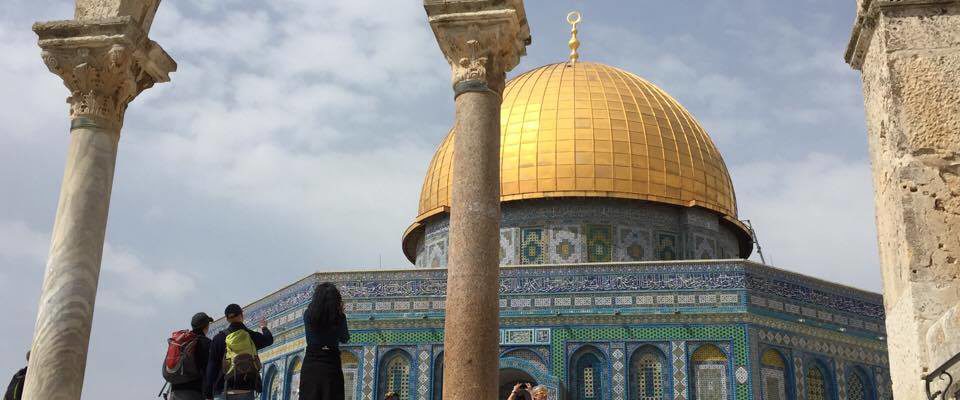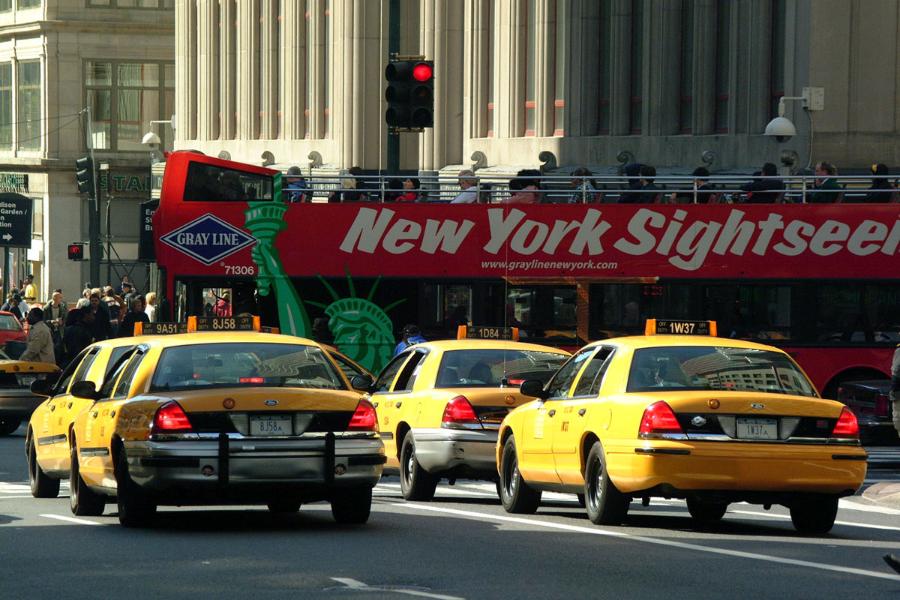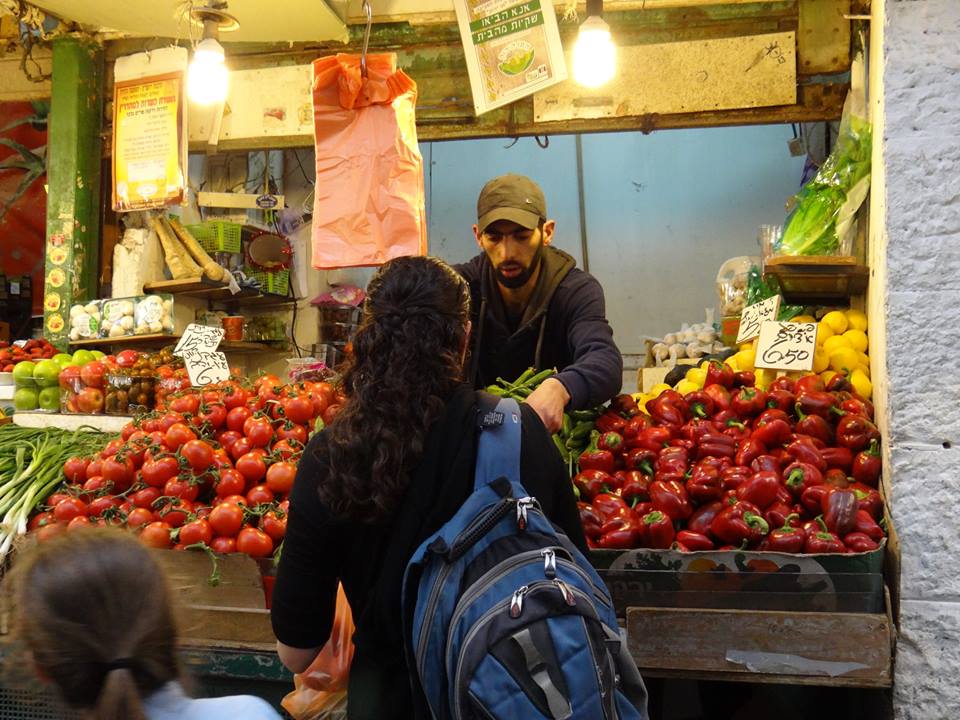Have you ever wanted to walk in the footsteps of those who’ve lived, loved, and laughed long ago? Jerusalem’s Old City is a place with thousands of years of history, an ideal destination to explore life as it once was.
Two months ago, during a trip to Israel, I was invited to take a tour of the Holy City, so I embarked on the Sandemans NEW Jerusalem Holy City Tour, an opportunity to immerse myself in the history of this mesmerizing city.
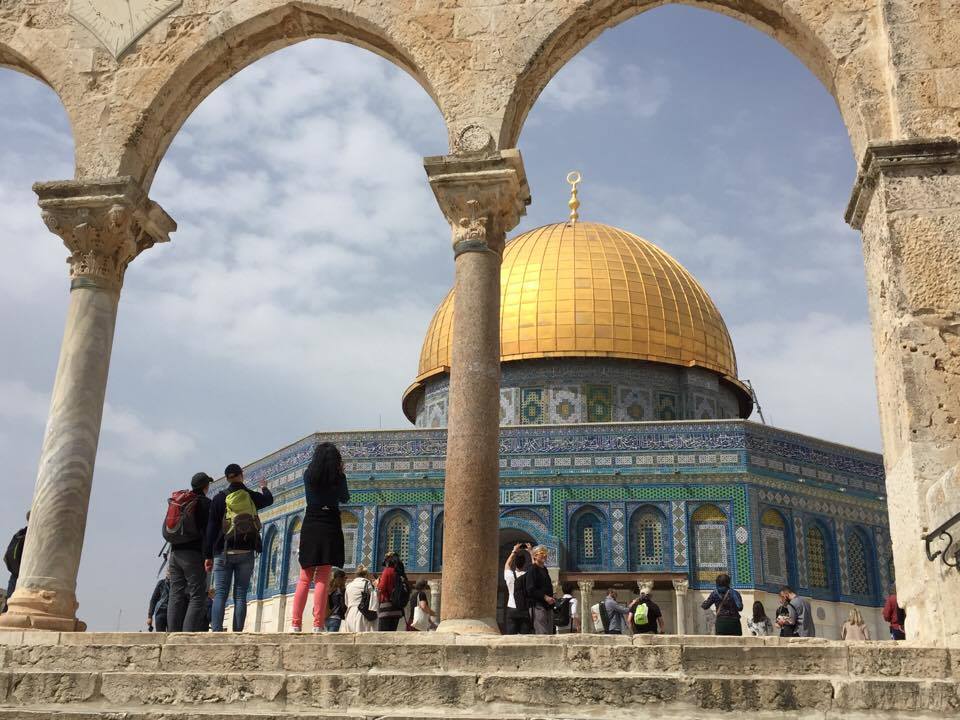
Spanning four hours, this comprehensive walking tour escorts you through the four distinct quarters of the Old City and ascends to the Temple Mount, one of the world’s most revered religious sites.
Commencing at the historic Jaffa Gate in the Old City, the tour offers a captivating historical narrative, weaving together 5,000 years of the city’s romantic, challenging, and transformative past.
We began inside the Jaffa Gate, where our guide, Gary, huddled us together, his voice rising over the bustling backdrop of vendors peddling their goods.
“The Holy City is the spiritual center of the world,” he shared. “Not only for the Jews but for the Muslims and Christians as well.”
As a car trundled over the cobblestones, Gary urged us to step aside, then delved deeper: ‘For Judaism, Jerusalem has been the holiest city and the spiritual heartland since the 10th century BCE. In Christian lore, Jerusalem’s place in the life of Jesus gives it great importance, as Jesus taught and healed here..’
I absorbed this rich tapestry of history, almost overwhelmed.
“Jerusalem is also considered a sacred site in Sunni Islamic tradition, along with Mecca and Medina. All three religions here fit together like a beautiful puzzle,” he concluded.
From the Jaffa Gate to the Zion Gate
The Tower of David
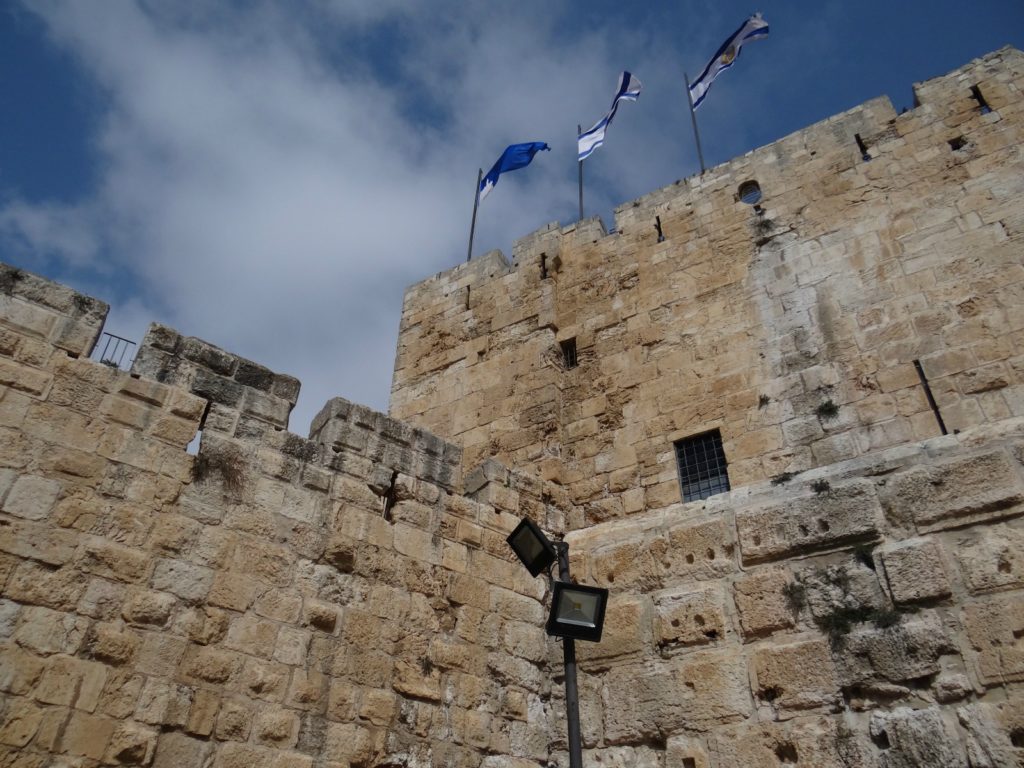
Departing from the Jaffa Gate, we ambled past an alley brimming with shops, their scents of exotic spices perfuming the air. Our journey paused before the iconic Tower of David. Named after King David, who reigned in 1010–970 BCE, this ancient citadel stands as a vigilant guardian on the Western edge of the Old City.
This medieval fortress, augmented with architectural enhancements from subsequent periods, houses the fabulous Museum of the History of Jerusalem. The Tower is also renowned for its exceptional sound and light show, The Night Spectacular, which vividly narrates Jerusalem’s journey from ancient times to modern days.
It’s a spectacle, unlike any other sound and light show I’ve encountered, truly living up to its name. The Tower of David (and The Night Spectacular) is an unmissable experience for anyone seeking to comprehend the country’s last 4,000 years.
Interestingly, despite its name, ‘The Tower of David’ has no direct link to the ancient king. This misnomer dates back to the Byzantine era when a tower from King Herod’s time (the Tower of Phasael) was mistakenly attributed to King David.
Mount Zion
The room of the Last Supper
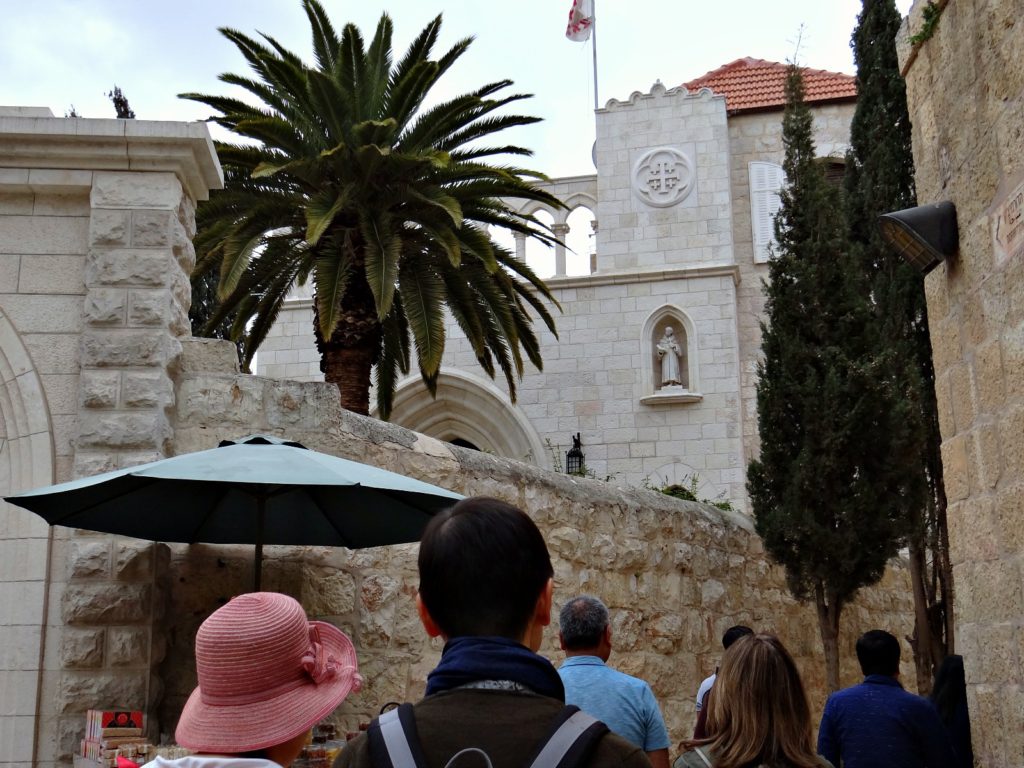
As we continued along the narrow street, we hugged the walls to allow cars to squeeze past. Approaching the Franciscan Monastery, we ascended a staircase and entered the Room of the Last Supper, revered as one of Christianity’s holiest sites in Jerusalem. This room is believed to be the location where Jesus and his disciples held the Passover meal, later known as the Last Supper.
Intriguingly, this historic chamber once served as a mosque. The room is illuminated by Gothic stained glass windows, casting a beautiful cerulean blue light. Inside, we observed an ornate mihrab (alcove) and Arabic plaques adorning the walls.
King David’s Tomb
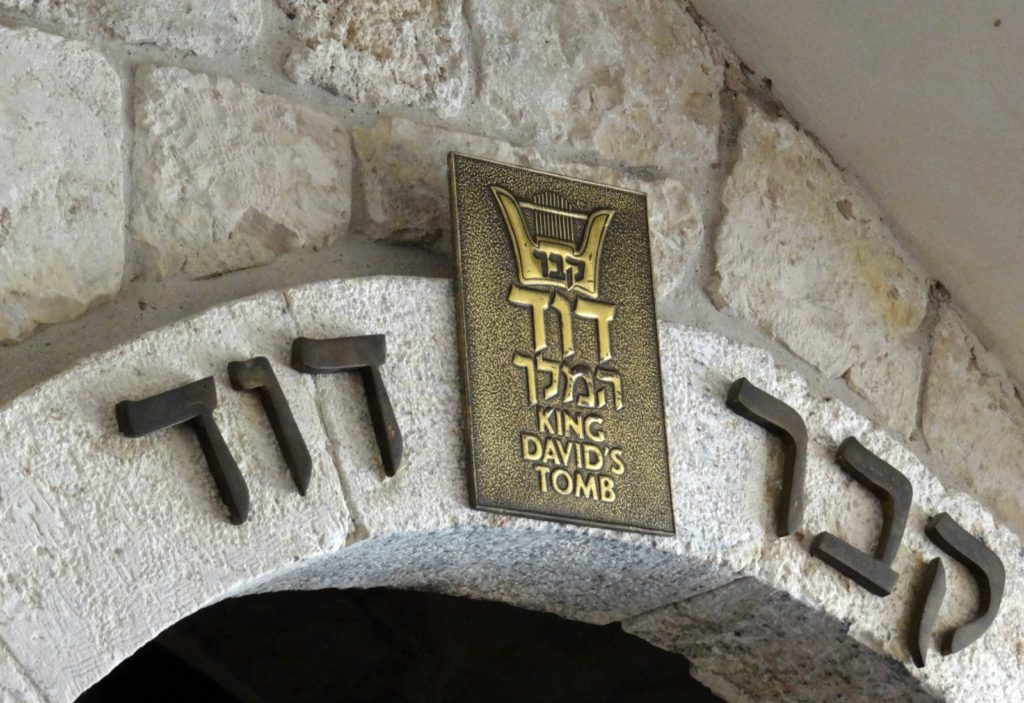
Descending to a level below the Room of the Last Supper, we found ourselves in a cramped space housing the velvet-draped royal tomb of King David. To reach it, visitors must navigate through segregated prayer areas designated for men and women.
We learned there is some debate regarding the tomb’s authenticity. According to the Bible, David was interred in the City of David, an archaeological site stretching from the southern walls of Jerusalem’s Old City. However, for over two thousand years, this site has been a focal point for tears and prayers, emanating a profound sense of reverence.
As a side note, if you have time to return to this area later, you can visit the nearby grave of Oskar Schindler, the man who saved more than 1200 Jews during the Holocaust, a story immortalized in Steven Spielberg’s Oscar-winning film, Schindler’s List.
The Jewish Quarter
The Western Wall
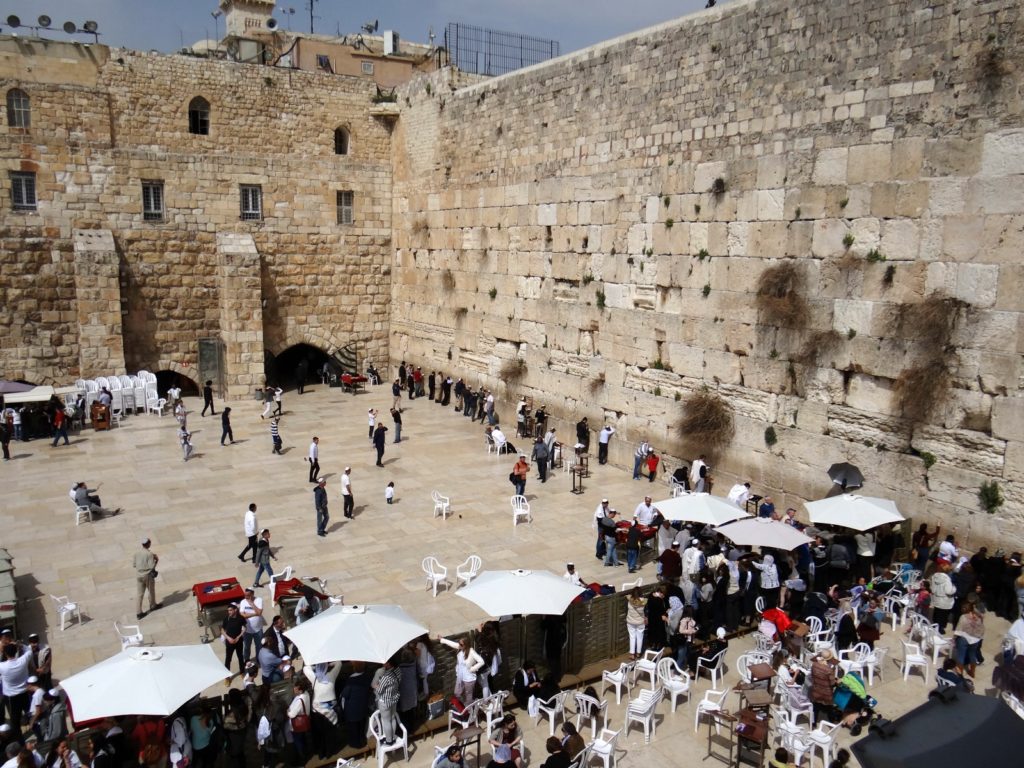
Unlike its neighboring quarters, the Jewish Quarter is mostly residential. It exudes a more tranquil atmosphere compared to the bustling Muslim and Christian Quarters.
Housing around 4,500 residents, its modern stone structures were reconstructed after 1967, following significant damage during the War of Independence in 1948.
This rebuilding phase was coupled with extensive archaeological excavations, unveiling numerous captivating sites.
Among them is the Cardo, an ancient Roman street that once thrived as a marketplace.
My tour happened to fall on a Thursday, a day favored for Bar Mitzvah celebrations. The streets were alive with families joyously making their way to the Western Wall, their paths marked by music, laughter, and the cheerful sight of blue and white polka-dotted balloons dancing in the sunlight.
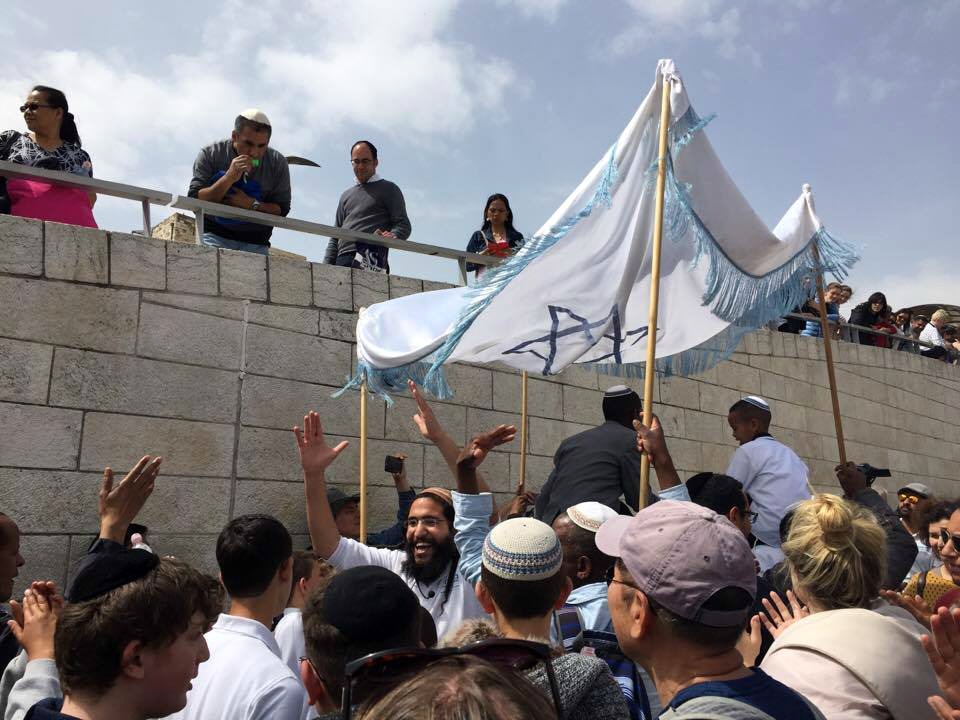
Our initial glimpse of the Western Wall was from an overlook offering a breathtaking view. Often referred to as the ‘Wailing Wall’, this site is among the holiest in Judaism and radiates immense spiritual significance.
Standing there, I was struck by a profound sense of humility.
Despite the throngs of people, a moment of serenity washed over me as I closed my eyes, enveloping me in a powerful aura of awe.
The Temple Mount
Dome of the Rock
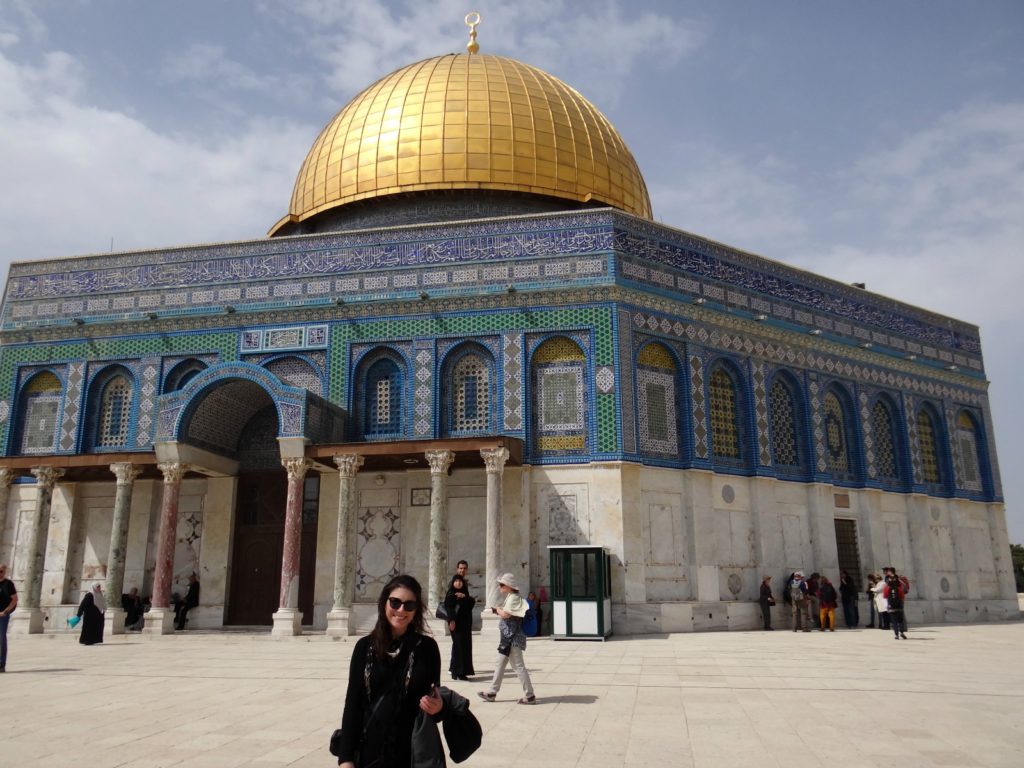
This tour sets itself apart from other Old City tours by including an ascent to the Temple Mount. To access it, be prepared for a potentially lengthy wait in the security line.
It’s wise to wear a hat and apply plenty of sunscreen, as shade is scarce. Nonetheless, the wait can be quite entertaining – Gary kept us captivated with legends and stories of Jerusalem.
As I stood there, I remembered a previous visit years ago, when my sister, who was living in Jerusalem for a year, took me to the Dome of the Rock. At the time, visitors were able to go inside this Islamic shrine on the Temple Mount.
I was twenty years old, and it was my first time so far away from home. An old man had approached me and motioned for me to remove my footwear. I did so, and he guided me inside the ancient edifice, murmuring in Arabic. I had no idea what he said, but I will never forget the strange mix of fear, excitement, and reverence I felt at the time.
Today, the policy has changed, and non-Muslims are generally not permitted inside. However, the structure’s exterior continues to be a source of immense fascination.
The Dome of the Rock is revered as the site where Prophet Mohammed is believed to have ascended to heaven. As the oldest extant Islamic monument, its beauty is awe-inspiring.
The dome, which was originally gold, underwent replacements first with copper and then aluminum. However, the aluminum is now gilded with gold leaf, generously donated by the late King Hussein of Jordan.
The Al-Aqsa Mosque
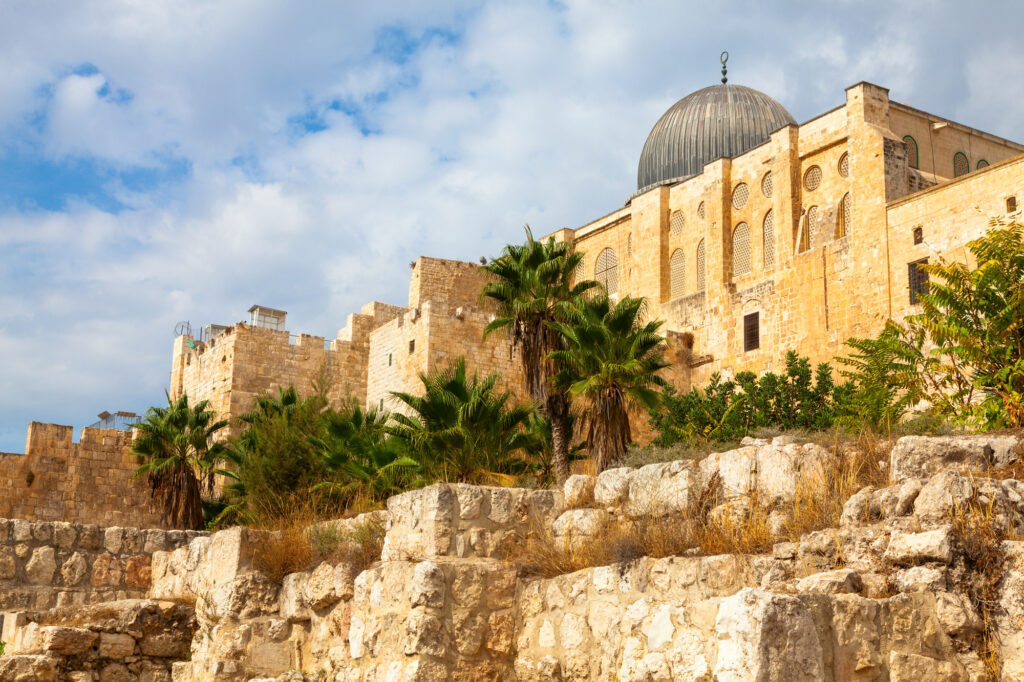
The Al-Aqsa Mosque is another beautiful site, perhaps less photographed but equally significant. As the third holiest site in Islam, following Mecca and Medina, it holds great importance.
Around the Temple Mount, we observed numerous groups of Muslim women engaged in study or enjoying picnics with their children.
Exiting through the Bab El Qattanin gate into the Muslim Quarter, we were led to the bustling Cotton Market. Here, around fifty vendors captivate children with an array of toys and vibrantly colored candy.
The Muslim Quarter
Lunch at Abu Shukri
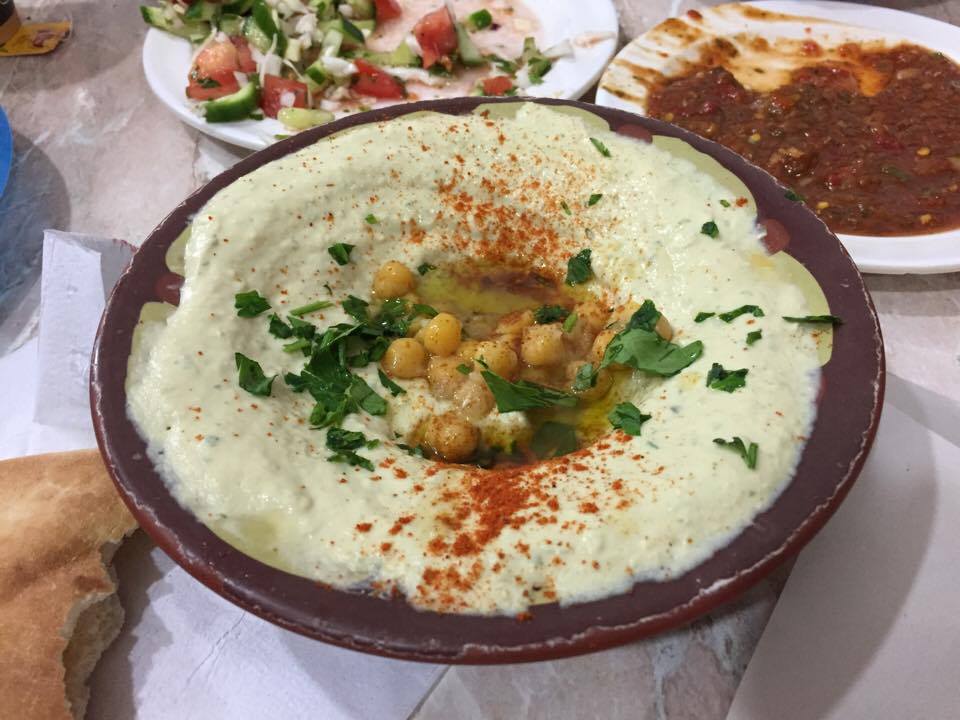
As we navigated the maze-like alleys of the Muslim Quarter, my excitement peaked upon learning that Abu Shukri was our designated lunch spot.
My affection for hummus knows no bounds. This exquisite spread, crafted from cooked and mashed chickpeas or other beans, then blended with tahini, olive oil, and lemon juice, became a daily delight during my stay in Israel.
Of all the places I tried, the hummus at Abu Shukri in the Old City stood out as the best. Renowned as ‘the ultimate arbiters of Arab-style hummus,’ according to GoJerusalem.com, their other dishes were equally tantalizing.
Gary offered us the option to dine at Abu Shukri with the group or venture out independently for lunch. For me, the choice was straightforward. This quaint, family-run establishment might be compact and bustling, but the wait is unquestionably worthwhile.
The Via Dolorosa
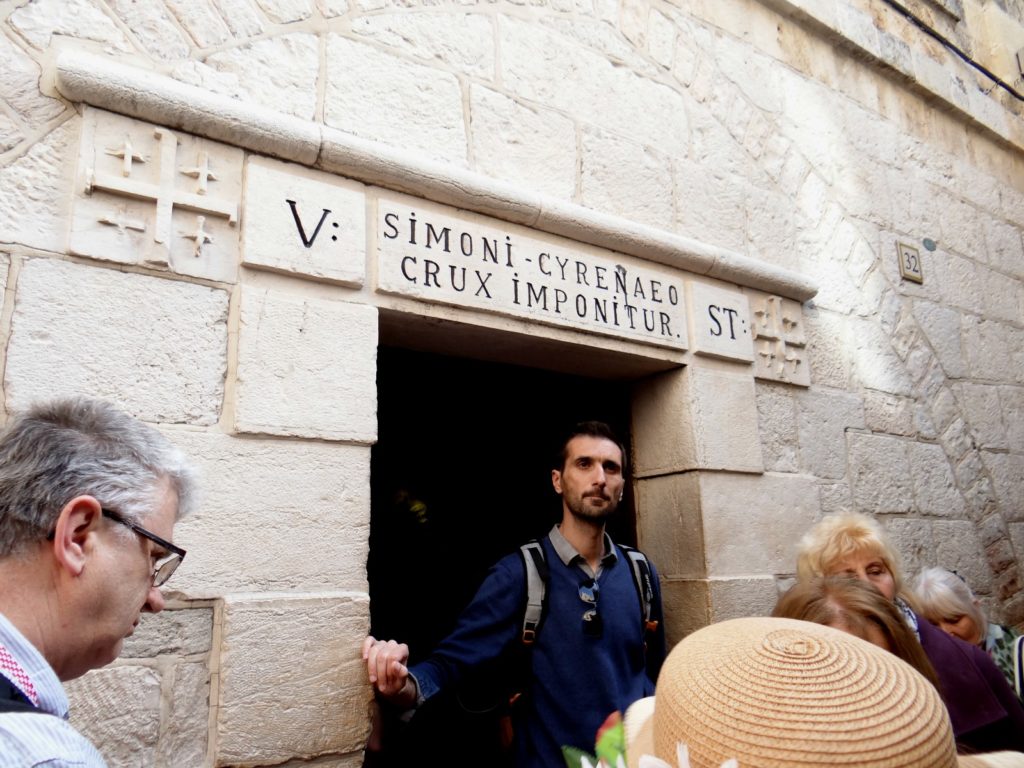
The Via Dolorosa, the Way of Sorrows, is the path believed to have been taken by Jesus as he bore his cross towards the site of his crucifixion and burial. Each station along the route commemorates a specific event that occurred during this solemn journey.
Upon leaving Abu Shukri, you find yourself at the 5th Station, where, according to tradition, Simon of Cyrene was compelled by the Romans to assist Jesus with his cross.
We continued our path, weaving through groups of devout pilgrims and eager tourists with cameras in hand, all the way to the Church of the Holy Sepulchre, which houses the final five stations.
The Christian Quarter
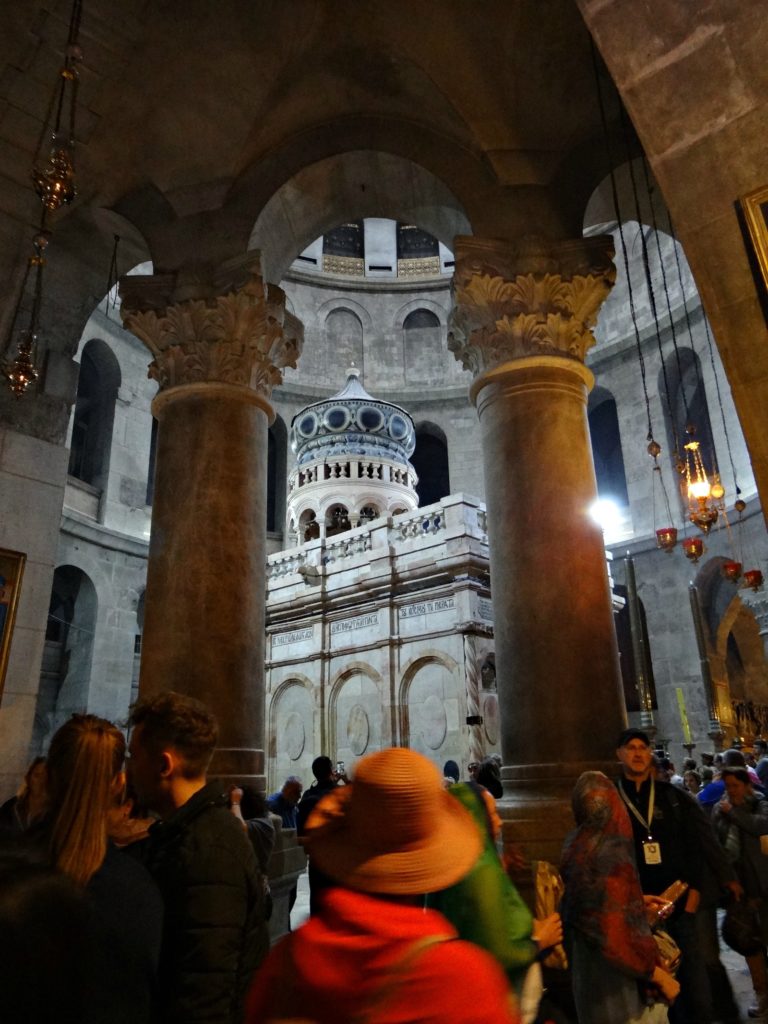
Church of the Holy Sepulchre
The Christian Quarter of the Old City is a mosaic of souvenir shops, artists’ workshops, hostels, and residences for nearly 4,500 people. Dominating this quarter is the imposing gray dome of the Church of the Holy Sepulchre.
Regarded as the site of Jesus’ crucifixion and burial, the Church of the Holy Sepulchre has long been a key pilgrimage destination for Christians worldwide. Nestled on the historic hill of Calvary, it is believed that the church’s construction was influenced by Helena, the mother of Emperor Constantine, some 300 years after the crucifixion.
In a unique arrangement, the church is shared by six Christian denominations. Due to longstanding rivalries, the keys to the church have been entrusted to a local Muslim family, the Nusseibehs.
Gary guided us through various sections of the church, ranging from the Stone of Unction near the entrance to the Chapels of Adam and St. Helena, culminating at the ornate pink marble tomb.
I wholeheartedly recommend the Sandemans tour to anyone visiting Jerusalem. It’s an enriching journey through the city’s history, politics, and diverse community.
Two Tour Options
For those pressed for time or seeking a brief overview of the Old City, Sandemans NEW Jerusalem Tours also offers a complimentary 2-hour tour that serves as an excellent introduction.
Having experienced both, I found each to be uniquely insightful. Additionally, for travelers exploring Europe, Sandemans operates tours in 18 cities – a detail worth checking on their website.
A few tips for visitors
Modesty in dress is essential for entry into many churches and holy sites, as well as for accessing the Temple Mount. It is advisable to wear appropriate attire; shorts are generally not allowed.
Carrying religious items such as Bibles or religious-themed jewelry is prohibited on the Temple Mount. Additionally, items like tripods, laptops, iPads, or Kindles are not allowed. If you happen to bring these items by mistake, Sandemans can store them for you during the tour.
Be aware that the Temple Mount is closed to non-Muslim visitors on Fridays and Saturdays. It may also be temporarily inaccessible during the week due to security concerns or religious holidays.
Note: While this information was accurate at the time of publication, it is subject to change without notice. Please be sure to confirm all rates and details directly with the companies in question before planning your trip.
I received a complimentary tour in exchange for writing this review. However, all reviews and opinions are my own.

